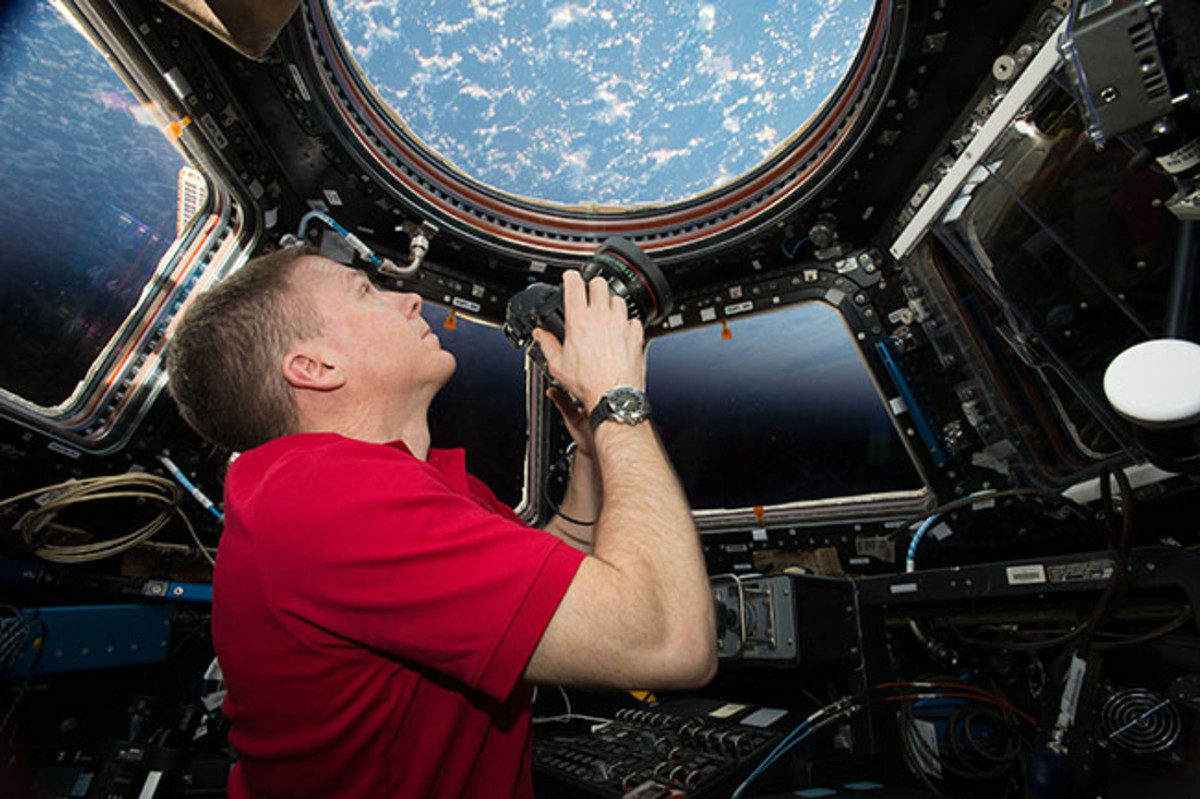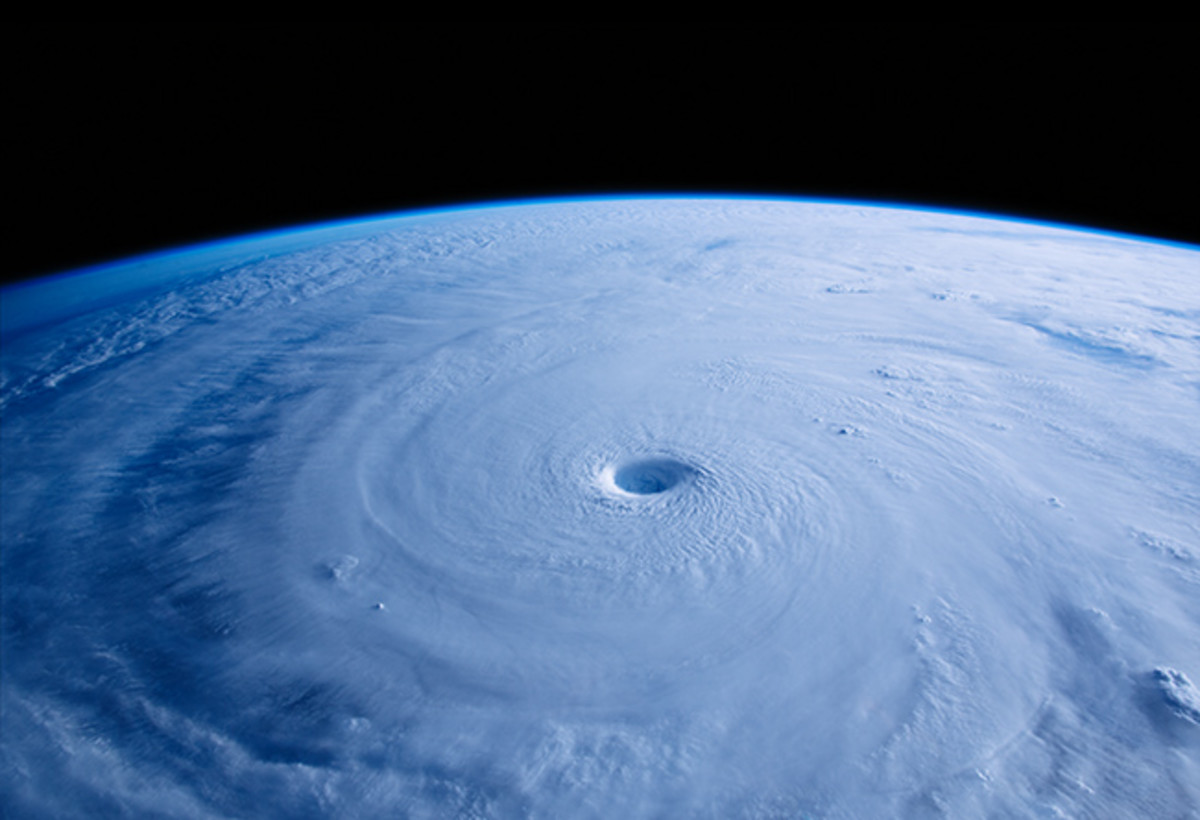New IMAX Film Showcases Our Beautiful Planet

Imagine you’re a director and you want to make a movie about Earth — and you want to make it in outer space. How do you do it? Get astronauts to be your cameramen, naturally.
That’s exactly what Toni Myers did for her new IMAX documentary A Beautiful Planet, which opens in select theaters today.
The 45-minute film is narrated by Jennifer Lawrence and documents life on the International Space Station (ISS) — from a spacewalk to a Christmas celebration to a haircut — as well as the condition of the space station we all share: Earth. It was shot entirely by crew members of the ISS who captured breathtaking images like cities (and countries) at night, massive storms, and ghostly auroras.
The result is a unique and beautiful portrait of Earth as seen from 249 miles above the planet.

Big-Screen Mission
One of the astronaut-cameramen was Terry Virts. He was part of a Space Shuttle mission to the ISS in February 2010 that installed the final modules of the station. That mission lasted nearly two weeks. When he returned to the station in September 2014, he stayed for 200 days.
“The good thing about the long-duration mission is that you get good at being an astronaut,” Virts says. “The other thing that’s great about it is, you get to know Earth. On a shuttle flight, I learned Earth by colors. If you saw red, you knew you were over the Sahara or Australia. If you saw white, you knew you were over Russia. But after 200 days, you really know Earth.”
What he didn’t know, though, was how to use a digital IMAX camera. Virts is an avid photographer — he took somewhere between 350,000 and 500,000 photos while on the space station. But shooting a movie was something different.
“I’m a fighter pilot. I’m not an artist. I wish I was. I love art,” Virts says. “So you had to learn a lot of the details of filming, the importance of sound and the importance of framing and of moving slowly.”
Fortunately, Virts and the rest of the crew had help. Director Myers and cinematographer James Neihouse gave them 25 hours of training over the course of nine months on how to operate the cameras.
“They’re such a joy to train because they’re the smartest people in the world, which is why they’ve been selected as astronauts,” Myers says. “They’re just like sponges in terms of the ability to focus and soak up information.”
But Neihouse adds they had to be careful not to overload the crew with too much information. The astronauts were going to space to do research and experiments — shooting A Beautiful Planet is something they’d do in their down time.
“There’s a thing called negative training, and that’s something you don’t want to do,” Neihouse says. “You want to make sure you’re not telling them information they don’t need because there’s too much they’re packing in there as it is to give them stuff that’s irrelevant to what the job is.”

An Environmental Call to Arms
With the astronauts trained, Myers and Neihouse sent them cameras aboard a SpaceX supply capsule. They also provided a list of 100-150 shots they wanted their cameramen to capture.
Myers and Neihouse have made IMAX space documentaries since 1985. They’ve seen — and documented — a lot of Earth. But A Beautiful Planet is the first film they shot on digital cameras, which opened up all sorts of opportunities for what kind of footage they could get.
“Before, we couldn’t see stars, couldn’t capture lightning or night lights on Earth because the IMAX film speed was too slow,” Meyers says. “Digital technology allowed us to get all that.”
The new technology also let her revisit places she saw in her earlier films, like her first Earth-focused film Blue Planet, which was released in 1990.
“I definitely wanted to look at the places I knew were trouble spots,” she says. “I wanted to revisit the Amazon rainforest, Madagascar, where there’s serious deforestation. I wanted to look at seasons and also try to illustrate the accelerating climate change.”
A Beautiful Planet is an incredible opportunity to spend time on the International Space Station and see Earth the way an astronaut does. But “in the beauty there’s still the ugliness,” Neihouse says. Along with all the gorgeous shots of Earth, we’re shown just how we’re reshaping and impacting our world.
Meyers hopes the movie will open eyes and inspire viewers — especially kids — to look for solutions to our environmental challenges.
“I wanted to reach a new, younger generation of people through appreciating what it is we have and the fact that there are some success stories,” Meyers says. “And if we put some human will and ingenuity into really trying to solve some of the problems, we can do a better job of things.”
Check out the official A Beautiful Planet website to find a theater near you playing the film.
